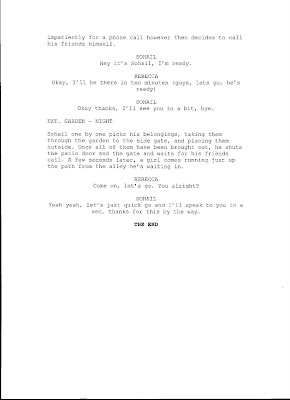
In order to prepare for the productions of our chosen films, we were set to understand the importance and quality of lighting and shading helping us with increased knowledge of video productions through technical factors meaning we could use this information to help us on how to set lighting etc within the productions of our own film.
We did this by dividing the section into two main factors then completing a few practical tasks to see how these could affect the outcome of any situation. The two sub-factors were direction and quality:
· Quality involves the concentration of the lighting onto the object, for example, hard lighting and soft lighting.
Soft lighting and hard lighting are both two different examples of quality within the lighting department. Soft lighting
· Direction relates to where the light source has been positioned in order to create a wanted effect. Aiming lights at certain surfaces in order for it to bounce off comes under direction where it creates a different yet interesting effect onto the screen.
Lighting Techniques – Madonna, Vogue (Video)
Once understanding the two key elements of light, we watched a music video done by Madonna named Vogue as well as being given sheets containing print screens of a few shots from the video. This video including a wide variety of light sources causing many extreme effects, showing us how effective they can be as well as what they can achieve; soft lighting, where on certain images in the video, they tend to blur and show different textures which is shown on mainly each character’s faces, also the use of soft/bright lighting techniques were shown on the clothes where it was difficult to recognise her uniform.
Quality and Direction of Lighting
Once watching the whole video, analysing each technique used, understanding their effects and taking into consideration for the production of our future video, our class was put into two groups being given a task to see these effects first- hand. First of all, we had to assign each person an individual role to put together this task leading to a joint effort understanding of direction and quality of light. We were also given an assortment of equipment to distribute to each person according to their role however had to come up with our own experiments to see how the direction and quality of lighting could affect the effects of lighting.
Every light has a point in which it reaches its brightest as well as a point where it loses itself completely. Lightin g can come from any direction; the top; bottom; right; left, it can also reflect off other surfaces to give a change of sharpness. Amongst these, the quality of each lighting is about the concentration of the lighting where they could in most situations fall into the two categories of ‘soft’ and‘hard’ light.
g can come from any direction; the top; bottom; right; left, it can also reflect off other surfaces to give a change of sharpness. Amongst these, the quality of each lighting is about the concentration of the lighting where they could in most situations fall into the two categories of ‘soft’ and‘hard’ light.
The main part of this task was to understand how the direction and quality of lighting could affect how realistic the lighting turns out as well as to find out how we could control the lighting to reach each of these effects.
The equipment we were given was:
• Mini DV camera
• Tripod
• Batteries
• Base plate
• Tape
• Laminated whiteboards and marker pens
• Lowel pro 250W lamp
• Stand
• Extension lead
• Barn doors
• Torch
• Black wrap and crock clips
• White materials and tin foil
• Safety gloves
We then had to assign each person with a role taken from the following list, and gave them the equipment needed as part of their job:
· Director – Coordinates the group to achieve the experiment.
· Camera – Set up and position the camera, and record evidence.
· Clapper – Writes “boards” to notify the audience what they are watching. Also helps Recorder.
· Recorder – Notes down the experiments variables and monitors decisions and revisions made.
· Gaffer – Positioning of light and equipment.
· Character in the scene (only for the quality experiment.)
Once finishing this task, I now realise that I have a lot more knowledge on the different types of lighting, how they are set up and how they can affect each aspect of your final piece. Therefore this task has been extremely useful as it prepares me as well as everyone else on this specific area of film productions and will most likely improve the quality of the final piece to be made. It will be important for us to consider what type of lighting to use in each shot as it could completely change the appearance giving a mixed/different image to what the producer intends to therefore adding the correct lighting will help give away the required message as well as add an effect helping the imagery of the production.



















